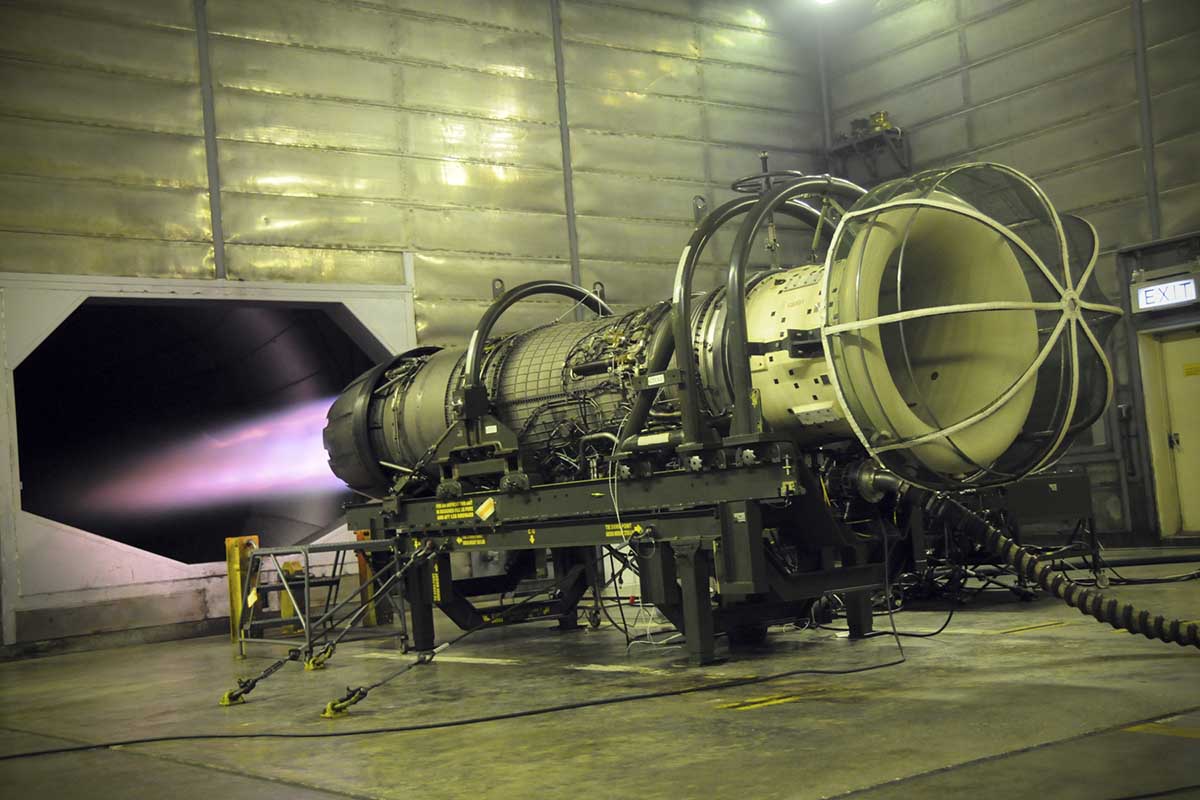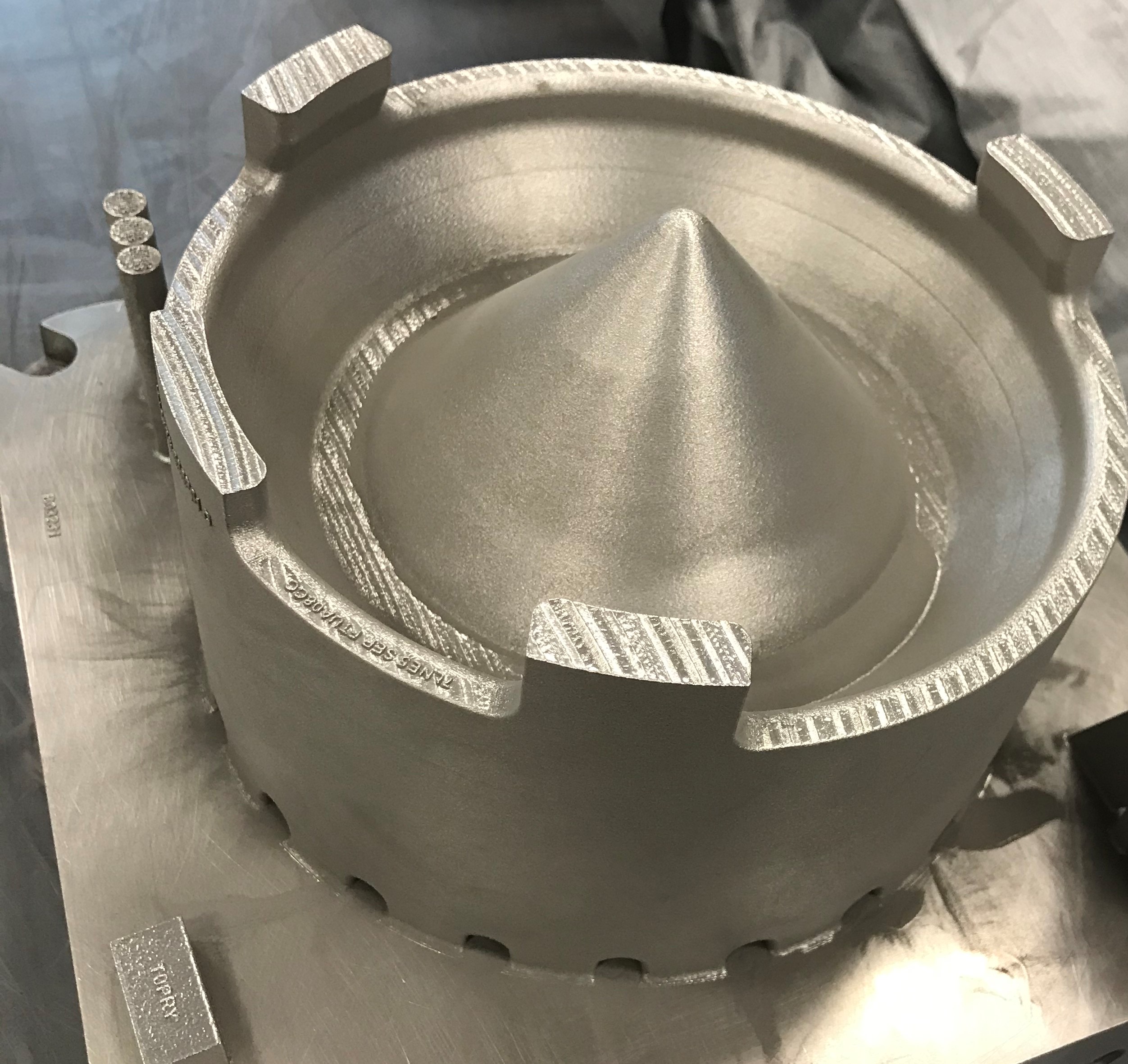Last year, GE Additive and GE Aviation proposed a collaborative metal additive manufacturing program with the U.S. Air Force to accelerate the adoption of AM for spare parts. That collaboration has just hit its first technology milestone with the 3D printing of a sump cover for the F110 jet engine which is used on both the F-15 and F-16 aircraft. The project is intended to improve military readiness and de-risk the supply chains of spare parts – especially for older military aircraft.
Colonel Benjamin Boehm, Director of the AFLCMC/LP Propulsion Directorate, explains: “The collaborative effort between the US Air Force and GE shows great promise toward the adoption of metal 3D printed parts as an option to solve the US Air Force’s current and future sustainment challenges. This capability provides an alternate method to source parts for legacy propulsion systems throughout their life cycle, especially when faced with a diminishing supplier base or when infrequent demands or low volume orders are not attractive to traditional manufacturers.”

Metal AM for military aircraft
The Air Force’s Rapid Sustainment Office (RSO) is responsible for ensuring mission readiness by applying novel and relevant technologies that benefit the operation and sustainment of the Force. However, the sourcing and producing of spare parts with traditional manufacturing is becoming increasingly difficult as more and more aircraft in the fleet enter their sixth decade of service. This is where GE comes in, offering extensive experience in testing and qualifying AM parts that meet the extremely rigorous regulatory requirements of aviation.
Lisa Coroa-Bockley, general manager for advanced materials solutions at GE Aviation, added: “Speed is additive’s currency, and by applying our additive experiences with the LEAP fuel nozzle and other parts additively printed for the GE9X, being able to offer an end-to-end solution and also applying lessons learned of a robust certification processes, we’ve been able to accelerate the pace for the USAF.”
Since the inception of the program, its planned trajectory has been a “spiral development”, whereby each phase increases in complexity and scale. The starting point is simple part identification, progressing to family of parts consolidation, and eventually addressing whole complex systems such as common core heat exchangers.

3D printing for the F110 engine
The teams have made their first major strides in the program, identifying spare parts for the F110 and TF34 engines. After experiencing difficulties in working with casting professionals due to extremely long lead times of two to three years, GE Aviation’s large military engines team had already started investigating metal AM and exploring how and where it might be useful. They were in the process of completing preliminary work on the F110’s sump cover, so that part became the focus of phase one.
James Bonar, engineering manager at GE Additive, explains: “Compared to other parts on the F110 engine, the sump cover might have lower functionality, but is incredibly important. It needs to be durable, form a seal and it needs to work for the entire engine to function – which is of course critical on a single engine aircraft like the F-16.”
Bonar’s team worked to ensure the additive design was robust when fine-tuning the AM parameters at GE’s Additive Technology Center (ATC) in Cincinnati. GE Additive M2 3D printers running cobalt-chrome were used to produce the first batch of sump covers. According to the Air Force, the program is ahead of schedule and phase 1b is already being planned. The teams will soon be focusing on a sump cover housing on the 40+ year old TF34 engine.

At this point, the Air Force has had its fair share of AM exposure, and not just for its jet engines. Earlier this year, a team of researchers from the Air Force successfully 3D printed a surgical retractor on a desktop 3D printer. The medical instrument is to be used in logistically challenging hostile environments where restocking is difficult or impossible. Elsewhere, the Air Force has also developed a method of 3D printing high-performance steel (AF-9628) for its weapons. The technology will be used to manufacture high-strength, lightweight ammunition.
The nominations for the 2020 3D Printing Industry Awards are now open. Who do you think should make the shortlists for this year’s show? Have your say now.
Subscribe to the 3D Printing Industry newsletter for the latest news in additive manufacturing. You can also stay connected by following us on Twitter and liking us on Facebook.
Looking for a career in additive manufacturing? Visit 3D Printing Jobs for a selection of roles in the industry.
Featured image shows GE’s F110 turbofan engine. Photo via GE.


